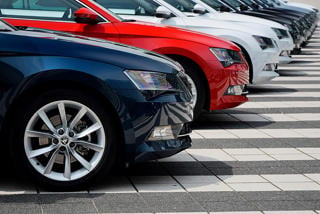Roger Woodward, managing director, CD Auction Group
Running a successful auction house is largely a numbers game.
In most cases we’re charging a fee for each vehicle handled, plus a commission on the value achieved, so it pays to keep the numbers up.
Right now, the numbers are challenging. Go back three years and fleet sales were on the rise, but still tracking around 15% down on their 2008 levels.
Add in the fact that we are still seeing many operators slow to renew their vehicles and you can understand why the industry is suffering from a shortage of ‘bread and butter’ ex-fleet stock.
As a consequence, the big boys in our business are using their commercial muscle to lock-in supply; introducing ‘cradle-to-grave’ services for major car manufacturers, taking financial stakes in wholesale sellers such as Webuyanycar and even offering funding to dealers who might be struggling with credit terms.
In effect, they’re buying up both ends of the supply chain, which rather changes the role of the auctioneer.
Of course, you want an auction company that is offering a full remarketing service.
But what if a significant proportion of the cars in the auction are also ‘owned’ (at least in part) by the auction company itself?
At the same time, there’s a move back among some auction houses towards mega-sales.
You know the kind of thing: more than 1,000 cars, focused on a big-name vendor and held on a Saturday to attract maximum public attention.
If successful, they produce a short-term lift for the big-name vendor and a good press release.
But the professional buyers hate them and, once again, I would question who truly benefits.
In a sale hall rammed with more than 1,000 vehicles, are yours going to stand out?
I don’t blame the big boys: they’ve got huge halls to fill and expensive overheads to manage.
But if you’re a small or medium-sized vendor and you’re struggling to get your voice heard, it just might be worth asking yourself: where do their priorities lie?


















Login to comment
Comments
No comments have been made yet.